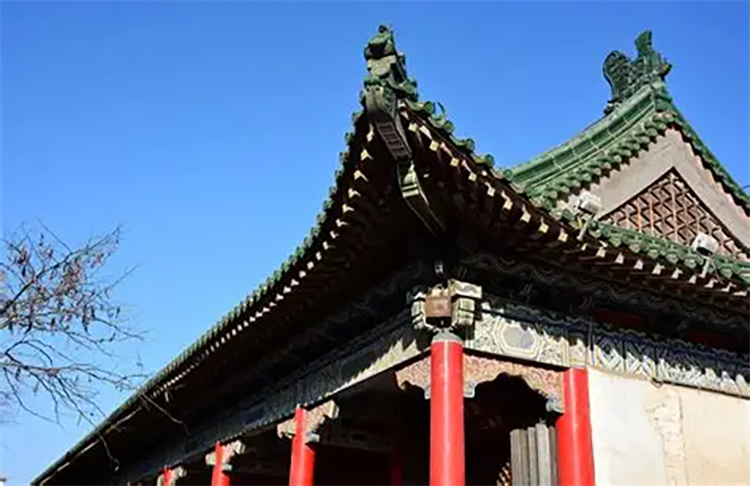Explore the Ancient Chinese Pagoda at Chengtian Temple — Yinchuan’s White Pagoda
White Pagoda of Chengtian Temple, Yinchuan
Push open the time-worn gate of Yinchuan’s old city and a 64.5-meter white brick tower pierces the sky. Wind chimes at the eaves murmur the Buddhist secrets of the Western Xia dynasty. Built in 1050, Chengtian Temple Tower is not only Ningxia’s oldest surviving Buddhist structure but a three-dimensional chronicle: brick as paper and carving as ink recording the fusion of Han Chan (Zen) architecture and Tangut (Dangxiang) artistic motifs. Climb to the top and the Helan Mountains and Yinchuan’s cityscape unfold beneath you; the clear chime of bells seems to overlap with a thousand-year chant, transporting visitors back to the Western Xia Buddhist kingdom.
1. Western Xia Buddhist Monument
One-line essence: A rare surviving Western Xia royal pagoda—where Han-style pavilion structure meets Tangut relief art.
In 1050, Emperor Yizong of Western Xia (Li Liangzuo) commissioned this “Chengtian” tower to pray for national prosperity. As the heart of a royal temple complex, it was both a sacred site for Tangut nobles and a symbol of political theology—the name Chengtian implies divine sanction of rule, while the eleven tiers evoke stages of spiritual ascent. Restored in the Yuan and Ming dynasties, the tower retains a straightforward Ming-era character. Exterior Tangut-style reliefs of Buddhas and guardian figures provide definitive visual clues to its identity.
2. Architectural decoding: when Han pavilion meets Tangut aesthetics
Looking up: the tower’s geometry
Chengtian Temple Tower is a textbook eight-sided, eleven-story pavilion-style brick pagoda, its silhouette like an upright brush. Its clever “tapering” design reduces each story’s width by about 0.6 meters upward, creating a smooth parabolic profile that balances structural stability with visual lightness. Compared with the blocky grandeur of the Giant Wild Goose Pagoda in Xi’an, this northwest tower appears more elegant—aptly nicknamed a “Little Wild Goose of the Frontier.”
Details as a cultural dialogue
– Eave chimes: 56 bronze bells move with the wind; the dry northwest air makes their tone unusually pure—ancients called them “samsara bells” that cleanse dust.
– Relief-language wall: Tangut-style reliefs on the outer walls are highly distinctive. Round-faced Buddhas with simple drapery differ from Han Chinese complexity; sinewy guardian figures reveal pastoral vigor. The carvings use a raised-relief technique—almost a Tangut-era “3D print” on brick.

3. Climb guide: shoulder history at 64.5 meters
Climbing experience
A wooden spiral staircase runs inside the tower. Steps are steep and narrow—only one person can pass sideways—but the summit reward justifies the effort: to the north the Helan range lies like a coiled dragon; to the south, Yinchuan’s old and new architecture mingles. Sunset is the recommended time: the last light robes the white tower in gold, wind chimes tinkle, and swallows skim the eaves—moments that echo the ancients’ reverent restraint.
Must-see viewpoints
– Third floor, south side: Home to the best-preserved Tangut relief of a bodhisattva; flame motifs in its backlight link visually to Dunhuang mural traditions.
– Seventh-floor window: Through hexagonal frames you can precisely project the tower’s shadow onto the temple’s central lotus-paved axis—an ancient “light-and-shadow shrine” reveal.
4. Immerse in Western Xia ritual: hear chants from a millennium ago
Although Chengtian Temple no longer houses a permanent monastic community, every lunar April 8 (Buddha’s Birthday) the complex stages a bathing ceremony. Devotees pour scented water over the Prince Buddha statue. Visitors may watch quietly or join locals circling the tower clockwise—an inherited Western Xia circumambulation custom symbolizing merit-making. For a deeper moment:
– Light a yak butter lamp: scan to pay (Alipay supported) at the lamp station—lamplight and sunset tower shadows create an especially meditative scene.
– Decode the bells: attentive ears detect five-tone variations echoing Chinese pentatonic scales, reflecting Tangut absorption of Central Plains musical ideas.
5. Practical tips: be a thoughtful pilgrim
Basic information
– Address: No. 121 Limin Street, Xingqing District, Yinchuan (old city center, walkable from the Drum Tower).
– Opening hours: Summer 8:30–18:30; Winter 9:00–17:30.
– Ticket: RMB 30 (includes the tower compound and Ningxia Buddhist Museum).
Getting there
– Bus: Take Route 1 or 11 to the “Chengtian Temple Tower” stop—the white spire is visible at disembarkation.
– Bonus: The Ningxia Buddhist Museum east of the compound displays Tangut fragments of the Buddhist canon; museum entry is free with tower ticket.
Etiquette
– Circumambulate clockwise and avoid forceful touching of reliefs.
– No flash photography inside halls; drone flights require prior approval.
Local secret
After your visit, walk ten minutes to “Najialou” and order the region’s hearty camel-hump-style stir-fry “tuofeng chao bola,” a rustic northwest dish of lamb offal and hand-cut noodles—perhaps the same nourishment enjoyed by the tower’s original craftsmen.

Closing: standing at a crossroads of time
Chengtian Temple Tower’s greatness lies in being both a frozen Western Xia epic and a living cultural gene. When your fingers trace wind-rounded bricks, you touch not only 11th-century carving but a people’s devotion and aesthetic resolve. No incense offering is required—simply stand beneath the tower and listen as wind chimes weave Tangut, Chinese and Sanskrit into a single cyclical hymn. This is the Silk Road’s most moving concord.


